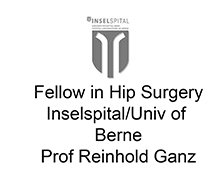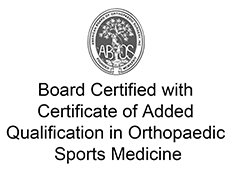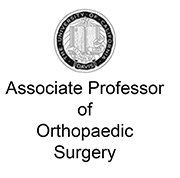
Hip dysplasia is a condition that is rooted in the early years of life, but often does not fully impact joint function until adulthood. Also known as developmental dysplasia of the hip (DDH), it is a congenital defect that impedes normal development of the hip bones, and progressively interferes with joint function and mobility. This condition is thought to be due to an inherently loose hip joint in childhood. If left uncorrected, the hip socket develops an irregular, shallow, and upsloping shape that does not sufficiently cover the femoral head. Eventually, the round head of the femur begins to drift away from the shallow socket and may become completely dislocated. Hip dysplasia that is untreated can cause significant disability for patients including hip pain, labral tears, and progression to hip arthritis at a young age.
Early Development
DDH can be noticed as early as infancy. If recognized, there are a number of treatment methods, including using specialized braces during the early years.
DDH typically affects girls more than boys. Symptoms include limited range of movement on the affected side and an appearance that one leg is shorter than the other. Unfortunately, DDH in many cases is completely silent and may even provide an advantage in certain sports such as dance and gymnastics due to the increased hip flexibility associated with it. The incidence of advanced DDH has also decreased in recent times due to early detection on newborn screening, ultrasound, and X-rays.
PAO Surgery
If these approaches fail to resolve DDH or if there is residual DDH based on a shallow socket, patients sometimes develop pain in adolescence or young adulthood. In some of these situations, the pain and instability sensations are so severe as to warrant surgery. The most common type of surgery is a reorientation of the joint called an osteotomy. On the socket, this procedure is called a PeriAcetabular Osteotomy (PAO). The procedure is performed in a hospital and involves cutting bones and fixing the hip socket in the correct position. The results from this procedure are good or excellent in 90% of patients for up to 10 years. In many patients, this procedure can prevent them from ever requiring a hip replacement, even if they had DDH.
Patients leave the hospital after four to six days, and rely on crutches for about two months. Dr. Jamali will check the progress of healing with periodic X-rays; most patients will be able to resume light weight-bearing activities in six weeks, at the earliest. Overall, if the hip has little to no arthritis, the success rate for avoiding a hip replacement is greater than 90% for at least ten years, if not longer.
Dr. Jamali has been performing PAO since 2003, and learned the technique directly from Professor Reinhold Ganz, in addition to working in the operating room with other notable PAO surgeons, including Dr. Richard Santore, Dr. Michael Millis, and Dr. Jeff Mast. He has pioneered the use of computer planning of PAO using 3D rendering software since 2005. Many surgeons like to do a two-stage procedure, with one-stage arthroscopic treatment to repair the labrum and a second procedure for the PAO. We have developed a technique to perform both the PAO and to repair the labrum so that everything can be done in one procedure.
For more information on hip dysplasia, please request an appointment with experienced orthopedic surgeon Dr. Amir Jamali. Call or email Joint Preservation Institute today to schedule your visit to our Sacramento or Walnut Creek office.








 Hip Dysplasia in Adults
Hip Dysplasia in Adults 







